People are a make-or-break factor in the success of the business after close.
In an M&A transaction, mitigating people risk involves disciplined change management and communications from the top. It requires clear messaging about the purpose of the deal and what behaviors are required for the deal to be successful for all stakeholders. And it requires getting the target’s senior leadership on board and engaged around the deal early. If managed well, the buyer will start evaluating the target’s human capital early in contemplation of the deal closing, so that a well-coordinated post-merger integration (PMI) effort can kick into gear on day one. People on both the target and buyer sides of the deal equation are an inalienable component of every aspect of the integration effort, which flows directly from the important human resources due diligence (HRDD) work stream.
For sellers, understanding the buyer’s intense interest in your people will help you adopt the role of partner in helping them analyze and plan for successful integration. This will put you in alignment with the buyer while diligence and contract negotiations are underway, and will give you the insight to know what levers you can pull to help the buyer get comfortable with the transaction. This partnership can inure to your benefit while you seek equitable resolution of diligence findings in contract negotiations.

Process Overview
- Assessing both organizations’ culture fit
- Identifying key talent for retention/selection purposes
- Understanding and assessing the reasonableness of ongoing personnel costs
- Identifying significant people-related risks and liabilities
- Determining integration challenges
- Gathering input for the change management and communication strategy
The first stage of the HRDD process can be broken down into a few key phases, placed in the context of the broader due diligence effort:
- Preliminary/high-level due diligence. After the CIM gets the attention of potential buyers and they submit indications of interest, they begin to review the materials uploaded to the data room. This narrows the field of bidders, as some decide to pass on the deal. HR advisors will attend the management presentation, and in some cases may be a significant contributor to this early screening process. If the deal represents a cross-border transaction for the potential buyer, the HR advisor will consider local labor laws and statutes. The culture of the country–and perhaps the culture of the target–will be evaluated at this point as well to ensure the deal team understands the cultural nuances they will be dealing with.
- Letter of Intent (LOI). Once the seller reaches an agreement in principle with a bidder, they will enter an LOI that formalizes the basic terms, including price or formula, financing, and structural components of the purchase. Other than certain provisions, the LOI is non-binding, since it is subject to the parties agreeing to a definitive sale and purchase agreement (SPA), so it creates a good-faith obligation only, and allows the buyer to complete detailed due diligence. The LOI will usually call for an exclusivity period, which is binding on the seller. This is a very common provision whereby the seller agrees not to court any other parties during a defined due diligence period, which may range from 1 – 6 months. It gives the buyer exclusive rights to conduct due diligence during this period. The LOI often stipulates a breakup fee if the company is sold to a third party, and it may require the seller to place funds in escrow to protect the buyer. The LOI is a big step for both parties, and it is typical for the buyer to conduct further HRDD before it is signed. The HR advisor will identify owners performing management functions, as well as other members of the senior management team that are critical to the company’s continued operation. Retention mechanisms will be inserted into the LOI for key personnel. Importantly, the LOI will specify if the deal will have an earn-out structure to keep managing owners engaged after closing.
The signing of an LOI marks a shift to a significant new stage in the HRDD process, as formal, detailed legal, finance, commercial, human resources, and other due diligence efforts get underway. As with the other due diligence work streams, the HR advisor’s process will begin with accessing the materials uploaded to the data room and scheduling a call with management to move HRDD forward. Among the topics HRDD will address are:
- HR liability and cost analysis
- Change-of-control agreements
- Compensation levels in comparison to market
- Severance costs and liabilities
- Retention needs analysis
- Compliance
- Vendor contracts
- Service models
- Structure of the SPA
- Integration challenges
If possible, the HR advisor will schedule site visits to observe the work environment, employees, and culture.
The findings of HRDD will be presented to the buyer in the HR advisor’s report, which will identify any red flags, recommend any necessary purchase price adjustments, and point out any considerations that should be addressed in the SPA. Beyond producing the report for the buyer, you should expect the HR advisor to actively participate in drafting the deal, including:
- Representations and warranties in the SPA, and qualifiers in the disclosure schedules of the disclosure letter. These are statements of fact about the company made by the seller. An example would be a statement that all benefit plans are operated in compliance with local laws, except for issues listed in a specific disclosure schedule.
- Covenants. These commit the purchaser and seller to actions that must be taken before and/or after closing. As an example, the seller would agree to not adopt any new benefit plans before closing.
- Conditions to closing. This refers to the verification of R&W and the performance of pre-closing covenants. For example, the contract may expressly state that all instances of noncompliance of benefit plans with local laws, as described in that specific disclosure schedule, will be corrected before closing.
- Indemnifications. These assign liability to the parties for events that happen after closing or that become known after closing. An example would be the seller indemnifying the buyer against liability and costs for any legal noncompliance at closing in relation to benefit plans.
Closing is primarily organized by the buyer’s and seller’s legal teams. But HR and the PMI team must be tightly involved because closing is the day (sometimes multiple days in the case of global deals) when the target’s operations are turned over to the buyer. The particular documents that need to be signed at closing depends on whether the deal is a share purchase or an asset purchase, but any other agreements associated with the transfer must be executed as well, such those pertaining to leases, licenses, and service agreements. So the buyer’s HR and legal advisors must work together to ensure that necessary employment agreements, non-solicitation agreements, and non-compete agreements are valid and signed by all appropriate parties as well. The buyer’s legal team will consider the appropriate state law, ensuring non-compete agreements are valid for the employees based on their salary levels, that they have legally defensible scope, that they contain the necessary disclosures, and that any change-in-control clauses are identified.
The third stage of HRDD is mostly completed in the period between signing and closing, which may be anywhere from a few weeks to a few months. It represents the final stage of integration planning, which the seller will have driven through the entire deal process if managed well.

Key People Risks
HRDD involves many facets, as discussed later in this article. But part of the HR advisor’s task will be assessing important human capital risks, which include:
- Employee retention. Flight risk is a major, legitimate concern in M&A transactions. The buyer must be concerned with retaining the company’s key revenue generators, key operators, and client-facing employees.
- Cultural and organizational fit and integration. It is difficult for even seasoned leaders to pinpoint and articulate the preferred culture of the organization. There are many well documented epic failures to integrate target and buyer. Examples include AOL Time Warner and Daimler Chrysler. The problem can be either failing to properly manage an achievable integration, or failing to reject a deal that has a high risk of cultural conflict that the buyer is ill-prepared to manage.
- Quality and composition of the combined entity’s leadership team. Too often, buyers do not apply a structured assessment process for leaders. More sophisticated buyers are increasingly using psychometrics and structured behavioral event interviews.
- Market competitiveness of compensation and benefits. There is often a mismatch of overall compensation and benefit levels (i.e., rewards), so rewards harmonization is a key area of effort. HR consultants can be used to great effect in this area.
- Availability and placement of talent. In hot markets and geographies, retention risk can be elevated.

Calibrating Valuation for HRDD Findings
The core formula for price is generally a multiple of normalized earnings, minus net debt and plus or minus a net working capital adjustment.
The multiple is more of an art than a precise science. It varies by size, industry, market, maturity of the company, and volatility of earnings, and it varies by historical time period according to market conditions, interest rates, and other macroeconomic factors that affect buyer demand for acquisition targets. It may range from as low as 2x or 3x to as high as 20x in faster growing companies in technology or emerging markets. For small and mid-sized businesses, the earnings component will generally be seller discretionary earnings (SDE), whereas middle market transactions will usually focus on earnings before income, taxes, depreciation, and amortization (EBITDA).
Regardless of the multiple and earnings measure being used, the concept of making purchase price adjustments stemming from HRDD is the same as incorporating adjustments surfaced from other diligence work streams. Ideally, these would have been identified in financial due diligence (FDD) and a quality of earnings (QoE) review. They can include:
- Non-recurring transactions. Examples include one-time severance costs, temporary changes to benefit costs, and one-time costs associated with HR initiatives (e.g., implementation of a new performance management system).
- Non-cash transactions. These need to be reversed in order to normalize earnings. Examples include GAAP charges for stock-based compensation and non-cash elements of defined benefit pension costs.
- Pro forma adjustments. If personnel costs are expected to change in the future as per the financial forecast, this needs to be reflected in normalized earnings used for valuation. So it is important to estimate these during HRDD. Examples of these include fully loaded costs of filling open positions, the impact of aligning compensation (such as planned changes to executive pay), the impact of harmonizing benefit programs, certain stand-alone costs for the target if it is being carved out of a parent entity, the impact of employment-related legislation, and anticipated cost savings from HR-related synergies.
For the net debt component, it is important to identify significant HR liabilities, and whether these necessitate purchase price adjustments. These may be categorized as:
- Obligations to pay cash, with no additional benefit to the target. Examples include contractual change in control payments that will be triggered at close (e.g., transaction bonuses and retention payments), severance costs triggered at or after close, and HR-related costs to shore up the company after close (e.g., hiring costs, costs to implement new HR infrastructure systems, and costs to implement new HR programs).
- Obligations that may not result in cash outflows during the investment horizon. These include unfunded pension liabilities and unfunded post-employment benefits (e.g., retiree health care or life insurance benefits. If the balance sheet is audited, the buyer can expect these to be reflected in it. But in major transactions, the buyer may bring in experts to evaluate the appropriateness of the actuarial assumptions.
- Commitments and contingencies. Examples of these are pending employee litigation costs, penalties payable due to HR regulatory non-compliance, severance or vacation accruals, under-accrual of expected bonus payouts, and reserves for self-funded medical plans.

Scope of HRDD
The scope of HRDD must be broad enough to help the buyer identify whether the business combination under consideration involves insurmountable hurdles that should kill the deal and for which measurement is moot. But hopefully, it will reveal insights about the target that will inform the path to integration that reduces risk in the deal. It will also identify quantifiable impacts on the value buyer’s initial value assumptions, such as compensation misalignments with market rates. HRDD is far from a cut-and-dry process. The advisor conducting HRDD for the buyer will consider the following areas:
- Culture and engagement. Cultural assessment can be performed in a number of ways. A cultural analysis tool board, for example, looks at multiple dimensions (such as customer focus, decentralization, creativity, etc.), and, for each dimension, scores both entities and sets a strategic target for the combined entity. This allows the buyer to see more clearly the gaps between the organizations, evaluate the challenges in closing them, and estimate the costs involved in doing so. This can help not only to determine whether the companies are a fit for each other and quantify purchase price adjustments needed to make the economics of the deal work, but it is also useful as an aid in planning PMI.
- Business and organizational design. This analysis examines not only how the target is structured, but it considers how the acquirer is structured as well. It is essential for determining the magnitude of the task of aligning the target and the buyer operationally, and for planning PMI.
- Executive programs and agreements. This analysis considers whether executive compensation is in line with the market. It also ensures the transaction price fully incorporates the impact of any extraordinary provisions or change-of-control clauses. It also involves examining long-term incentive plans like stock compensation and restricted stock, to evaluate the treatment of those awards once the transaction closes, and whether that will trigger any retention risk.
- Talent management and workforce planning. The HR analyst will be interested in whether incentives exist in a formal or informal structure. Also important is whether and how bonuses are linked to organizational performance, and whether the organization follows a pay for performance approach or pays standard bonuses irrespective of individual performance.
- Sales force. Aspects of sales force compensation that are important include whether sales incentive plans are capped or uncapped, whether they have resulted in large payments in the past, and whether the organizational benefit was worth the payout. The HR analyst will also need to identify who the top performers are, and the retention risk associated with them.
- Broad-based compensation. The focus here is on the market competitiveness across the target’s workforce.
- Health and welfare benefits. This includes medical, life, and disability insurance, including whether policies are in compliance with statutes, and in line with the market. Very important is whether these plans are fully insured or whether the target self-insures any portion of the coverage provided.
- Retirement benefits. HRDD must determine if the target has any defined benefit plans, and whether they are properly reported in the company’s financials.
- Employment policies and practices. HRDD must include a review of HR policies and procedures from a labor law compliance perspective, as well as industry best practices. The buyer’s advisor will be alert to any integration challenges in the HR function.
- HR operations and systems. Along with HR policies and practices, the HR advisor must evaluate the systems the target has in place to conduct them, including whether functions are in-house or outsourced. Systems of interest include recruitment, access permissions, payroll, and talent management.
- Labor and employee relations. This is important in certain industries that are unionized. The HR advisor will need to determine if any collective bargaining agreements are in place, as well as the state of relations between the union(s) and management.
The scope of HRDD is highly situational. Prioritization of each of the foregoing areas will be based on the nature of the transaction. It will depend, for instance, on the size and buyer’s rationale for the deal. If the buyer’s aims are primarily for the acquisition of talent, the level of risk on various HR dimensions will be different than if the investment thesis centers on acquiring the target’s IP. Prioritization will also depend on the friendliness of the transaction, the proposed design of the combined business, which countries the target’s workforce spans, the capital/people intensity of the industry, the sources of revenue, and cost synergies.

Retention Programs
A successful transaction will require the engagement and cooperation of key target personnel to get the deal done, as well as to effectively integrate the target after closing. So it is critical for the buyer to identify the employees who will be important to these efforts, and to tailor an effective plan to prevent them from flying the coop. Ascertaining retention needs and formulating strategies to meet them is integral to supporting both the deal decision and the buyer’s successful realization of ROI. Although PMI is, by definition, undertaken by the buyer after closing, the groundwork for it must be laid as part of HRDD.
Defining Retention Requirements
To define retention requirements, the buyer must first understand how retention risk is distributed among the target’s workforce at each of three distinct phases of the transaction. A useful system for doing is, for each phase, to organize all employees into a nine-region grid defined by low, medium, and high business impact on the vertical axis, and low, medium, and high departure likelihood on the horizontal axis. The placement of each employee on the grid can differ from phase to phase. The nine grid regions can be organized into four categories, as follows:
- The bottom left region, defined by a low rating on both dimensions
- The two adjacent regions, defined as low on one dimension and medium on the other
- The three regions on the diagonal
- The three regions toward the top right
At each phase in the deal process:
- The importance of the employee at a given phase considers such factors as past performance, potential, organizational knowledge, technical knowledge, managerial capability, transaction criticality, and difficulty to replace.
- The likelihood of the employee leaving is driven by factors like the employee’s wealth, their perception of the safety of their job or title if the transaction closes, and their expectations as to how things will be different–better or worse–under new ownership. Interviews with key managers can help the HR advisor judge where employees fall on this continuum. The assignment of executives along this dimension should consider employment contracts in place—specifically clauses that provide a payout triggered by certain conditions coincident with a change in control, such as reduced responsibilities, a diminished title, relocation more than a certain number of miles from their current location, etc. Quantifying potential purchase price adjustments includes taking into account change-in control payouts required, based on the intended actions to be taken with respect to each employee.
Each phase of the deal process relies heavily on a different set of employees, so the two-dimensional workforce analysis described above needs to be done separately for each phase. The three phases of the deal process that require separation for retention planning purposes are:
- Phase I: This is the period following the announcement and prior to closing the transaction. The target employee group consists of the people that are critical to the successful completion of the transaction. Several reasons can drive these employees to leave. They may be unsettled by the announcement, and uncertain about their future job security or opportunity for mobility. Alternatively, they might have concerns specifically about the acquiring organization. Another reason may be attention from headhunters seeking to capitalize on deal-related concerns. The business risk to the buyer—and the seller, at least until the deal is closed—is the uncontrolled loss of key talent. The seller incentivizes employees to stay through the close with bonuses that are generally payable at close.
- Phase II: This is the period immediately following close when PMI begins. The employees of interest at this point are those critical to effective integration. They often have substantial legacy knowledge within a function. Even if they know how important they are to the company at this point, some of them may be thinking ahead and see “the writing on the wall,” expecting their jobs to become redundant once they have helped the acquirer absorb the company. Others may be disappointed with their new role, or changes to their role, perhaps finding it uninteresting or finding the workload during integration too heavy. Some may not be willing to accept a new role into which they are being placed or are unwilling to relocate. Disappointment with their new manager, colleagues, or work environment can lead to attrition as well. The buyer will need to maintain focus on retaining key producers and others of high importance and heavy flight risk to ensure key customer relationships are transferred. Immediately following closing, the same dynamics driving attrition risk during the deal process are still in play, and the buyer may still lose employees that had started looking for new employment before close. As the PMI process progresses, the buyer has greater control over turnover, but key talent can still be lost through poor management of the integration process.
- Phase III: This is the period 9 – 18 months after integration. At this point, the employees the buyer needs to focus on keeping are those critical to the continuing success of the combined entity. Employees leave at this stage because they are unable to “fit in” at the new organization, have unmet expectations, are wistful about their old work environment, or see a cap on their future opportunities. If integration has been handled properly, unwanted turnover will likely be less of a concern. But the buyer’s long-term retention strategy for keeping the most important people can’t be taken for granted.
Designing the Retention Program
Retention programs must be crafted to effectively manage the shifting risk across all three deal phases.
Targeted use of retention bonuses has risen over time, as M&A experience has taught buyers the hard way how ROI can evaporate when human capital risk is not managed. An estimated 76% of U.S. M&A deals involve retention bonuses. As retention risk varies by situation, so does the prevalence of retention bonuses. While the percentage is about 42% in energy, metals and mining, it is over 90% in professional services.
For deals smaller than $100 million, retention bonuses comprise an estimated median 2% of total deal value, while the estimated median is 1.8% for deals greater than $100 million up to $1 billion, and 0.2% for deals greater than $1 billion.
Retention program design involves the following key dimensions:
- Eligibility. This is the basic decision about the roles/talent that need to be retained. In each case, the buyer will ask if this person is critical to executing the strategy, and whether this person is likely to leave if a retention payment is not provided. A recent study estimated 65% of C-suite and senior managers received retention bonuses, while the percentage was 70% across all employees deemed critical for integration, and 35% for other employees.
- Level. This refers to the amount of the reward payment. The buyer will need to make a judgment about what amount is necessary to retain the key staff until the transition period is complete.
- Form. The program must be specific as to whether the reward will be paid in cash or in some form of equity-based compensation. Approximately 73% of awards are cash and 19% are equity, with the remainder being a combination of the two.
- Performance. The buyer must decide whether the program will include performance criteria, and if so, the key metrics and milestones that will be used.
- Conditions. Whether conditioned on performance or not, there will always be basic criteria upon which award payment is conditioned. The most common condition is time-based—i.e., the bonus is paid if the employee stays through the retention period. 66% of conditions are only time-based, whereas only 6% are only performance based, and 25% of programs condition payouts on both time and performance. The remainder of programs use other conditions.
- Existing incentive plans. The buyer must consider incentive plans the seller already has in place, and the implications for any change-in-control provisions. It may be possible for the buyer to use these existing plans for retention purposes.
- Timing/method. The buyer must specify what time frames should be covered by the incentive, and whether the award should be granted in a single lump sum or in installments. To retain employees through closing, the seller typically pays the award at close as a cash lump sum. For programs designed to keep key people through the integration process, the full award is typically paid out when or as the integration period is completed (e.g., 6 – 18 months after close), and is typically paid out in cash. These integration process programs predominantly make awards in multiple tranches, timed to coincide with key integration milestones. This approach balances employee satisfaction with the buyer’s desire to obtain the full range of engagement needed from employees over the course of the PMI process.
For programs aiming to get employees to stay long term, the full award is not paid out until the employee is fully integrated into the new entity (e.g., 1 – 3 years after close), and may be paid in either cash or equity over a defined time span and in conjunction with specified performance goals.
Communicating Retention Awards
Effectively deploying retention programs means making sure the buyer establishes trust with employees as soon as they take control of the target. HRDD conducted during the deal process will be designed to support the buyer by planning for that moment. Employees need to understand how highly the organization values them, the company’s needs and expectations of them in making the integration a success, and how the retention program designed for them has been tailored to accomplish these goals.
Conclusion
Smart buyers look beyond the reasons for an investment thesis to work on paper. They recognize that people make the difference between a successful acquisition and one that destroys value. Buyers use the HRDD process not only to identify potential purchase price adjustments, but to put the acquisition on track for success by assessing the leadership team’s and key employees’ capabilities and developing effective retention strategies. They set a deliberate culture and maintain clear communications. From the moment the deal is announced to key management, the seller can serve as a partner in the communication process, explaining the rationale for the deal and helping employees keep an open mind about the bright future ahead. Prudent buyers also adopt an enterprise view to effectively manage benefits, understand the market competitiveness of rewards, and leverage the total rewards program to attract and retain the right talent. They evaluate HR service, delivery, and design needs, develop and adhere to a clear change management plan, and enlist experienced resources to speed the transition process and make it more efficient. Mastering these drivers of success significantly increases the buyer’s chances of maximizing its ROI. And at the root of it is well-structured HRDD.
RELATED CONTENT



